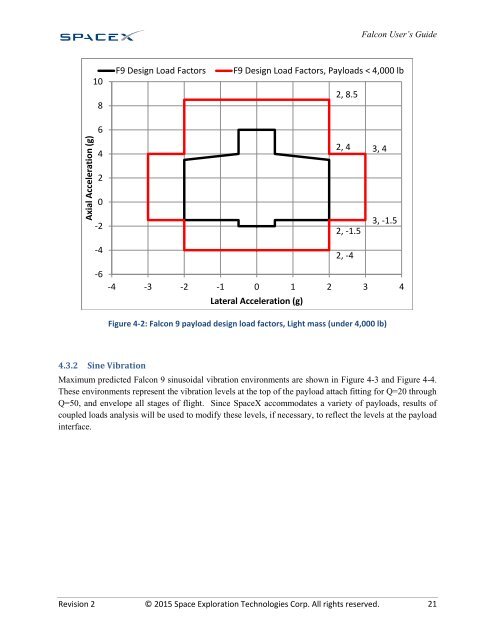PAYLOAD USER’S GUIDE
1S2nU9J
1S2nU9J
You also want an ePaper? Increase the reach of your titles
YUMPU automatically turns print PDFs into web optimized ePapers that Google loves.
Axial Acceleration (g)<br />
Falcon User’s Guide<br />
10<br />
8<br />
F9 Design Load Factors<br />
F9 Design Load Factors, Payloads < 4,000 lb<br />
2, 8.5<br />
6<br />
4<br />
2, 4 3, 4<br />
2<br />
0<br />
-2<br />
-4<br />
2, -1.5<br />
2, -4<br />
3, -1.5<br />
-6<br />
-4 -3 -2 -1 0 1 2 3 4<br />
Lateral Acceleration (g)<br />
Figure 4-2: Falcon 9 payload design load factors, Light mass (under 4,000 lb)<br />
4.3.2 Sine Vibration<br />
Maximum predicted Falcon 9 sinusoidal vibration environments are shown in Figure 4-3 and Figure 4-4.<br />
These environments represent the vibration levels at the top of the payload attach fitting for Q=20 through<br />
Q=50, and envelope all stages of flight. Since SpaceX accommodates a variety of payloads, results of<br />
coupled loads analysis will be used to modify these levels, if necessary, to reflect the levels at the payload<br />
interface.<br />
Revision 2 © 2015 Space Exploration Technologies Corp. All rights reserved. 21


